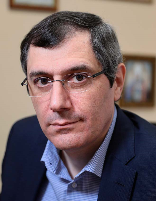Применение алгебры подстановок для унификации программ
Аннотация
Ключевые слова
Список литературы
1. Lague B., Proulx D., Mayrand J. et al. Assessing the benefits of incorporating function clone detection in a development process // Proceedings of the International Conference on Software Maintenance. — Washington, DC, USA: IEEE Computer Society, 1997.— p. 314–321.
2. Baker B. S. On finding duplication and near-duplication in large software systems // Proceedings of the Second Working Conference on Reverse Engineering. — Washington, DC, USA: IEEE Computer Society, 1995. — p. 86–95.
3. Kontogiannis K. A., Demori R., Merlo E. et al. Pattern matching for clone and concept detection // Journal of Automated Software Engineering.— 1996.— Vol. 3.— p. 108 -125.
4. Li Z., Lu S., Myagmar S., Zhou Y.. Cp-miner: Finding copy-paste and related bugs in large-scale software code // IEEE Transactions on Software Engineering. — 2006. — v. 32, N 3.— p. 176–192.
5. Johnson J. H. Identifying redundancy in source code using fingerprints // Proceedings of the Conference Centre for Advanced Studies on Collaborative research (CASCON). — IBM Press, 1993.— p. 171–183.
6. Фаулер М. Рефакторинг. Улучшение существующего кода. — Символ-Плюс, 2008. — 432 c.
7. Komondoor R., Horwitz S. Using slicing to identify duplication in source code // Proceedings of the 8th International Symposium on Static Analysis. — Springer-Verlag, 2001. — p. 40–56.
8. Roy C. K., Cordy J. R. A survey on software clone detection research // Technical report TR 2007-541, School of Computing, Queen’s University. — 2007. — v. 115.
9. Robinson J.A. A machine-oriented logic based on the resolution principle // Journal of the ACM. — 1965. — v. 12, N 1 — p. 23_41.
10. Baader F., Snyder W. Unification theory. — Handbook of Automated Reasoning, v. I, Elsevier Science Publishers, 2001. — p. 447–533.
11. Yelick K.A. Generalized approach to equational unification // Technical Report, Massachusetts Institute of Technology Cambridge, MA, USA, 1990.
12. Luckham D.C., Park D.M., Paterson M.S., On formalized computer programs // Journal of Computer and System Science — 1970. — v.4, N 3. — p. 220-249.
13. Itkin V.E., Zwinogrodski Z. On program schemata equivalence // Journal of Computer and System Science. — 1972. — v. 6, N 1. — p. 88-101.
14. Иткин В.Э. Логико-термальная эквивалентность схем программ // Кибернетика. — 1972. — N 1. — с. 5-27.
15. Sabelfeld V.K. The logic-termal equivalence is polynomial-time decidable // Information Processing Letters. — 1980 — v. 10, N 2. — p. 57-62.
16. Eder E. Properties of substitutions and unifications // Journal of Symbolic Computations. — v. 1. — 1985. — p. 31-46.
17. Palamidessi C. Algebraic properties of idempotent substitutions // Lecture Notes in Computer Science — v. 443 — 1990. — p. 386-399.
18. Martelli A., Montanari U. An Efficient Unification Algorithm // Transactions on Programming Languages and Systems (TOPLAS). — 1982. — v.4, N 2. — p. 258-282.
19. Plotkin G.D. A note on inductive generalization // Machine Intelligence. — 1970. — v. 5, N 1. — p. 153-163.
20. Sorensen M. H., Gluck. R. An algorithm of generalization in positive supercompilation // Proceedings of the 1995 International Symposium on Logic Programming._MIT Press. — 1995. — p. 465-479.
21. Bulychev P., Kostylev E., Zakharov V. Anti-unification algorithms and their applications in program analysis // Proceedings of the 7th International Conference “Perspectives of System Informatics”, June 15-19, 2009, Novosibirsk. — 2009. — p. 82-89.
22. Захаров В.А., Костылев Е.В. О сложности задачи антиунификации // Дискретная математика. — 2008. — т. 20, N 1. — с. 131-144.
23. Zakharov V.A. On the refinement of logic programs by means of anti-unification // Proceedings of the 2nd Panhellenic Logic Symposium, Delphi, Greece. — 1999. — p. 219-224.
24. Котов В.Е., Сабельфельд В.К. Теория схем программ. — М.:Наука, 1991. — 348 с.
Рецензия
Для цитирования:
Захаров В.А., Новикова Т.А. Применение алгебры подстановок для унификации программ. Труды Института системного программирования РАН. 2011;21.
For citation:
Zakharov V.A., Novikova T.A. On the application of substitution algebra to program unification. Proceedings of the Institute for System Programming of the RAS (Proceedings of ISP RAS). 2011;21. (In Russ.)













